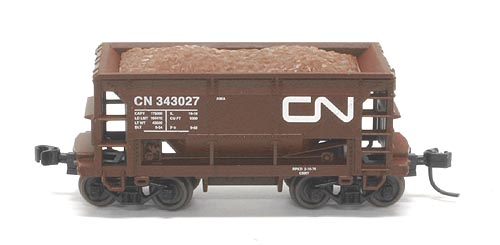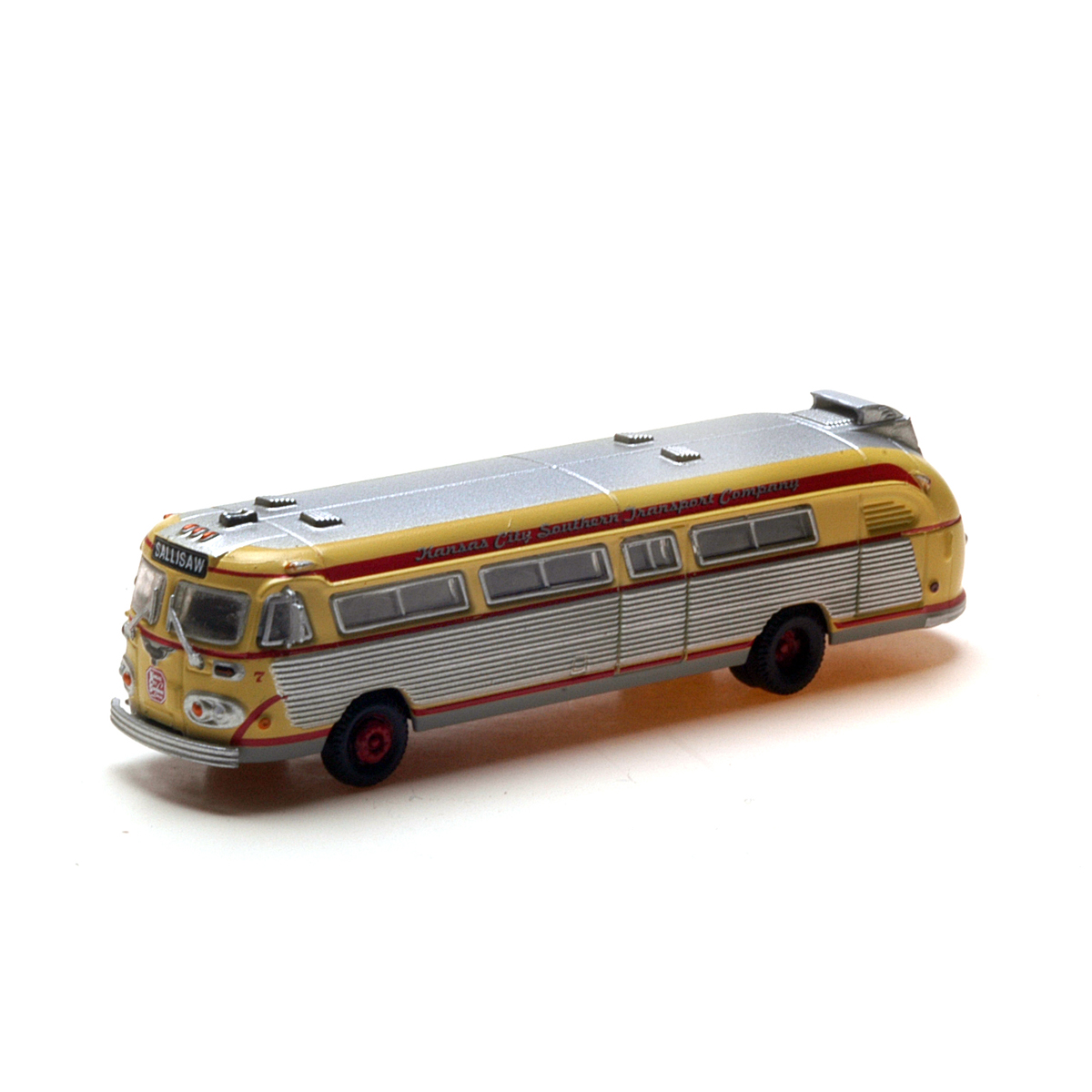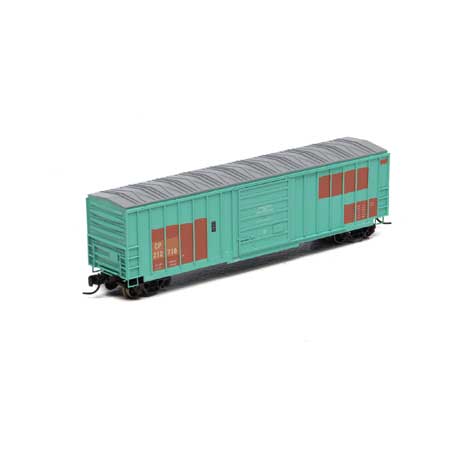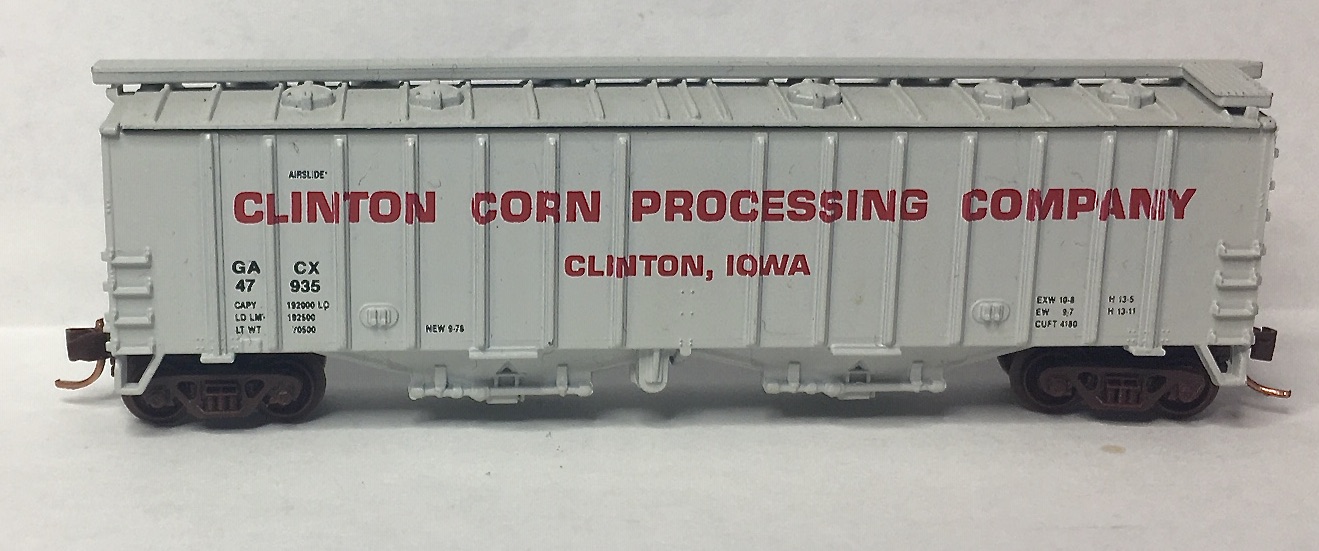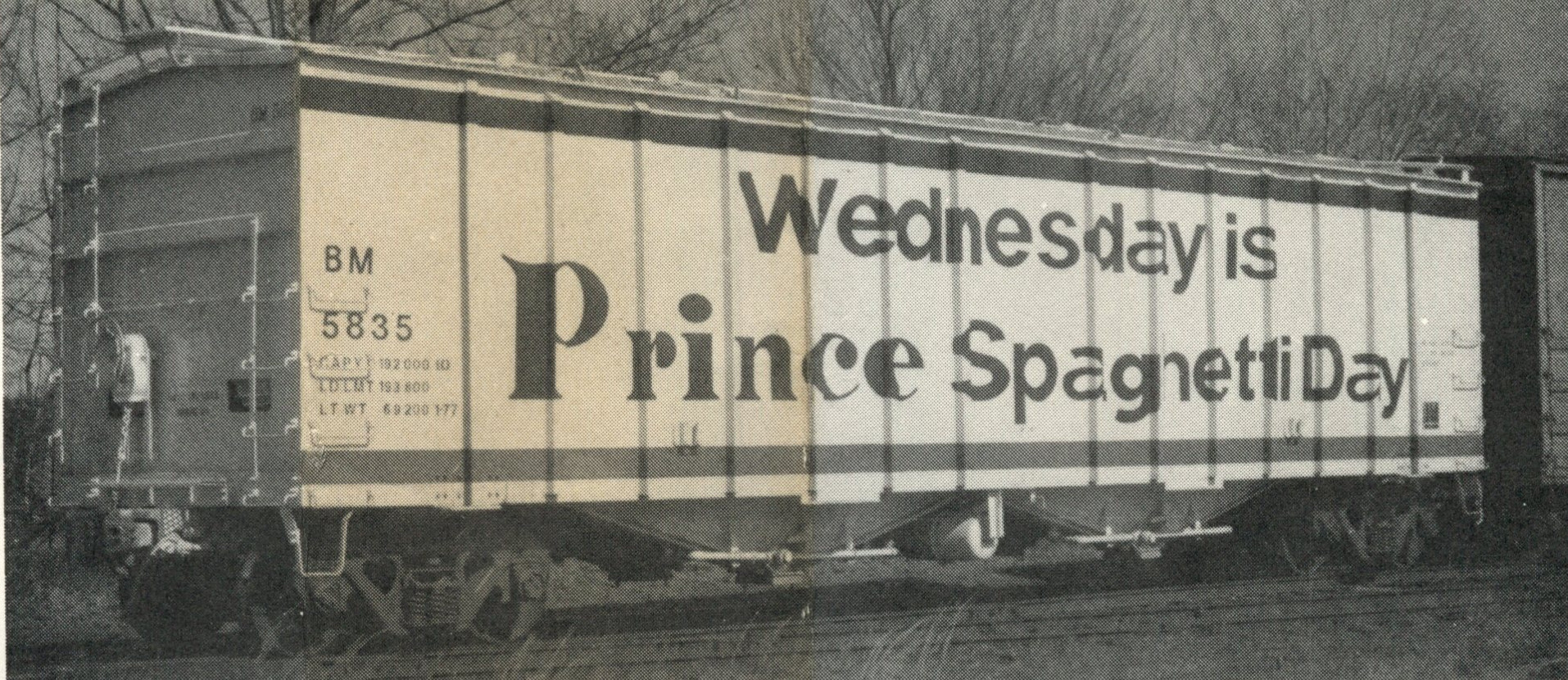Model Information: This model was originally created by Delaware Valley. It was later acquired by Bowser. It has also been used by Eastern Seaboard Models models.
Prototype History: The first Airslide covered hopper was introduced by General American Transportation Corporation (GATX) in 1953 and had a capacity of 2600 cubic feet. The Airslide is primarily designed for the bulk shipment of dry, granular or powdered commodities. The design of that car is such that it can be loaded and unloaded quickly and with little spillage through the use of air pressure. The most common commodities carried include: flour, sugar, starch, plastic pellets, cement, powdered chemicals and carbon black.
Due to customer demand for larger covered hoppers capable of handling bulk commodities, General American Transportation Corporation introduced the larger 4180 c.f. model in 1963. GATX produced more than 5,000 of the 4180 cubic foot Airslide covered hoppers between 1963 and 1980. These very common cars continued General American’s “Airslide” family innovations from the 1950s, and proved valuable to bulk shippers who wanted a larger car than the earlier-design 2600 cubic foot cars provided.
Due to customer demand for larger covered hoppers capable of handling bulk commodities, General American Transportation Corporation introduced the larger 4180 c.f. model in 1963. GATX produced more than 5,000 of the 4180 cubic foot Airslide covered hoppers between 1963 and 1980. These very common cars continued General American’s “Airslide” family innovations from the 1950s, and proved valuable to bulk shippers who wanted a larger car than the earlier-design 2600 cubic foot cars provided.
Road Name History:  The Southern Railway (reporting mark SOU) (also known as Southern Railway Company) was a US class 1 railroad that was based in the Southern United States. It was the product of nearly 150 predecessor lines that were combined, reorganized and recombined beginning in the 1830s, formally becoming the Southern Railway in 1894.
The Southern Railway (reporting mark SOU) (also known as Southern Railway Company) was a US class 1 railroad that was based in the Southern United States. It was the product of nearly 150 predecessor lines that were combined, reorganized and recombined beginning in the 1830s, formally becoming the Southern Railway in 1894.
At the end of 1970 Southern operated 6,026 miles (9,698 km) of railroad, not including its Class I subsidiaries AGS (528 miles or 850 km) CofG (1729 miles) S&A (167 miles) CNOTP (415 miles) GS&F (454 miles) and twelve Class II subsidiaries. That year Southern itself reported 26111 million net ton-miles of revenue freight and 110 million passenger-miles; AGS reported 3854 and 11, CofG 3595 and 17, S&A 140 and 0, CNO&TP 4906 and 0.3, and GS&F 1431 and 0.3
The railroad joined forces with the Norfolk and Western Railway (N&W) in 1982 to form the Norfolk Southern Corporation. The Norfolk Southern Corporation was created in response to the creation of the CSX Corporation (its rail system was later transformed to CSX Transportation in 1986). The Southern Railway was renamed Norfolk Southern Railway in 1990 and continued under that name ever since. Seven years later in 1997 the railroad absorbed the Norfolk and Western Railway, ending the Norfolk and Western's existence as an independent railroad.

At the end of 1970 Southern operated 6,026 miles (9,698 km) of railroad, not including its Class I subsidiaries AGS (528 miles or 850 km) CofG (1729 miles) S&A (167 miles) CNOTP (415 miles) GS&F (454 miles) and twelve Class II subsidiaries. That year Southern itself reported 26111 million net ton-miles of revenue freight and 110 million passenger-miles; AGS reported 3854 and 11, CofG 3595 and 17, S&A 140 and 0, CNO&TP 4906 and 0.3, and GS&F 1431 and 0.3
The railroad joined forces with the Norfolk and Western Railway (N&W) in 1982 to form the Norfolk Southern Corporation. The Norfolk Southern Corporation was created in response to the creation of the CSX Corporation (its rail system was later transformed to CSX Transportation in 1986). The Southern Railway was renamed Norfolk Southern Railway in 1990 and continued under that name ever since. Seven years later in 1997 the railroad absorbed the Norfolk and Western Railway, ending the Norfolk and Western's existence as an independent railroad.
Brand/Importer Information: On May 1, 1961, Bowser was purchased by Lewis and Shirlee English and moved from Redlands, CA to their basement in Muncy, PA. The original Bowser Manufacturing Co first advertised in the model railroad magazines in November 1948. At that time, the company had only one (HO Scale) engine, the Mountain, which had a cast brass boiler that is no longer available. It was sometime later that Bowser (Redlands) developed the NYC K-11 and the UP Challenger. The molds were made by K. Wenzlaff who introduced himself at the MRIA Show in Pasadena, CA in 1985 These two locomotives are still current production.
Bowser entered into N Scale in 1998 with their acquisition of the Delaware Valley Car Company, a manufacturer of N scale freight cars.
Bowser entered into N Scale in 1998 with their acquisition of the Delaware Valley Car Company, a manufacturer of N scale freight cars.
Item created by: Lethe on 2015-10-02 10:12:19. Last edited by gdm on 2018-02-19 08:53:59
If you see errors or missing data in this entry, please feel free to log in and edit it. Anyone with a Gmail account can log in instantly.
If you see errors or missing data in this entry, please feel free to log in and edit it. Anyone with a Gmail account can log in instantly.





